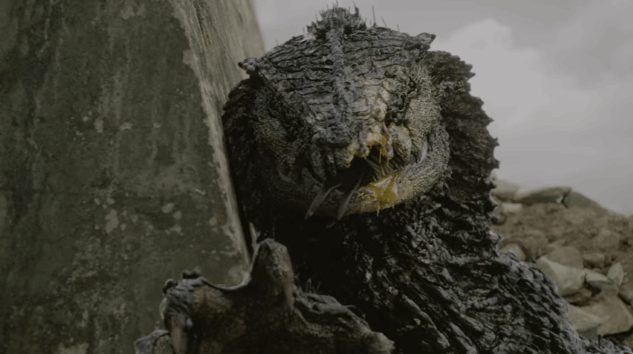Neill Blomkamp Is Conducting an Amazing Exploration of the Boundaries of Horror, Gore and Sci-Fi

Neill Blomkamp’s Oats Studios is doing something special right now, and you may be missing it as it unfolds.
No, you won’t see any of these films at your local multiplex. You won’t see them at your indie art theater, either. You won’t see them in any theater, because the director’s new series of short films is online-only. But perhaps more accurately, you won’t see these concepts in a theater anytime soon, because Blomkamp’s full creativity (and lust for bloodshed) have been unleashed. The nightmares being dreamt up by the District 9 director online are so extreme and so visceral, most studios would never dare to touch them. And for genre fans, that should be seriously exciting.
It’s a little difficult to succinctly explain what exactly Oats Studios is, and how it operates. Essentially an independent film studio with a hand-picked crew of artists FX technicians, it’s the engine for taking abstract ideas out of Blomkamp’s head and turning them into beautifully actualized realities. In the last month, as part of the ongoing “Volume 1” portion of the project, they’ve released three 20-plus minute short films: Rakka, Firebase and Zygote, along with a handful of shorter, more comedic entries. The results are frankly incredible, displaying both astonishing creativity and boundary-pushing, along with technical acumen that can compete against the best big-budget films in Hollywood. How the studio has the funding to put these kinds of visuals together, I have no idea—nor have I seen any answer in any of the other pieces written about the studio.
Given that the shorts are being released online for free, primarily through YouTube, they’re largely unmonetized. The only way the company is actively soliciting fan funding is via an interesting partnership with Steam, which is offering $5 “assets” packages for each film, which include textures, 3-D models and visual effects used in each of the films. It begs the question of what the “average viewer” is really expected to do in support of the creative venture, given that the assets in question are only really usable in their intended way by fellow filmmakers or at the very least people with a background in digital art.
Volume 1 of Oats Studio’s output has yet to conclude, with one more 20-minute short entitled Lima on the way, described by Blomkamp as “a current day thriller.” That stands in fairly stark contrast to the three previously released, which are all more easily classified as either science fiction or horror. Let’s dive a bit deeper into each of those films.
-

-

-

-

-

-

-

-

-

-

-

-

-

-

-

-

-

-

-

-

-

-

-

-

-

-

-

-

-

-

-

-

-

-

-

-

-

-

-

-








































